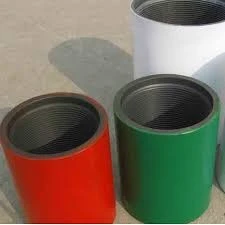- Afrikaans
- Albanian
- Amharic
- Arabic
- Armenian
- Azerbaijani
- Basque
- Belarusian
- Bengali
- Bosnian
- Bulgarian
- Catalan
- Cebuano
- Corsican
- Croatian
- Czech
- Danish
- Dutch
- English
- Esperanto
- Estonian
- Finnish
- French
- Frisian
- Galician
- Georgian
- German
- Greek
- Gujarati
- Haitian Creole
- hausa
- hawaiian
- Hebrew
- Hindi
- Miao
- Hungarian
- Icelandic
- igbo
- Indonesian
- irish
- Italian
- Japanese
- Javanese
- Kannada
- kazakh
- Khmer
- Rwandese
- Korean
- Kurdish
- Kyrgyz
- Lao
- Latin
- Latvian
- Lithuanian
- Luxembourgish
- Macedonian
- Malgashi
- Malay
- Malayalam
- Maltese
- Maori
- Marathi
- Mongolian
- Myanmar
- Nepali
- Norwegian
- Norwegian
- Occitan
- Pashto
- Persian
- Polish
- Portuguese
- Punjabi
- Romanian
- Russian
- Samoan
- Scottish Gaelic
- Serbian
- Sesotho
- Shona
- Sindhi
- Sinhala
- Slovak
- Slovenian
- Somali
- Spanish
- Sundanese
- Swahili
- Swedish
- Tagalog
- Tajik
- Tamil
- Tatar
- Telugu
- Thai
- Turkish
- Turkmen
- Ukrainian
- Urdu
- Uighur
- Uzbek
- Vietnamese
- Welsh
- Bantu
- Yiddish
- Yoruba
- Zulu
Understanding Well Tubing and Casing in Oil and Gas Production Processes
Understanding Well Tubing and Casing Key Elements of Oil and Gas Production
In the realm of oil and gas exploration and production, the terms well tubing and casing are crucial in understanding how wells function and ensure the safe and efficient extraction of hydrocarbons from beneath the Earth's surface. These components are integral to the overall integrity of a well and significantly influence the success of drilling operations.
What is Well Casing?
Well casing is a series of steel pipes that are installed in a well to provide structural integrity and support during and after drilling. Its primary purpose is to protect the wellbore and the surrounding environment by preventing the collapse of the borehole and isolating the well from aquifers and other formations. Casing is typically inserted into the drilled hole and cemented in place to seal off various geological formations.
There are several types of casing, including
1. Surface Casing This is the first casing that is installed in the well. It is designed to protect groundwater and the surface from contamination. It extends from the surface down to a predetermined depth, which is usually above the groundwater level.
2. Intermediate Casing Installed after the surface casing, this type of casing is used to further isolate the wellbore and protect against pressure from deeper formations. It is critical in areas where there are significant pressure changes or potential for unstable formations.
3. Production Casing This casing encompasses the entire production interval and allows for the safe extraction of hydrocarbons. It is usually set deeper than the intermediate casing and is essential for maintaining well integrity during production.
Each type of casing serves a specific purpose and is tailored to the conditions encountered during drilling. The careful selection and implementation of casing are crucial for the long-term success of a well.
well tubing and casing

What is Well Tubing?
While casing provides fundamental support and protection to the well, well tubing is used to transport oil, gas, or water from the reservoir to the surface. Tubing is a smaller-diameter pipe that is installed inside the production casing. It allows for easier extraction of hydrocarbons and is interchangeable, which means it can be removed and replaced without significant alterations to the casing itself.
Key aspects of well tubing include
1. Flow Efficiency Tubing is designed to maximize the flow of hydrocarbons or fluids from the reservoir. It has a smaller diameter compared to casing, allowing for increased pressure and flow rates, which can lead to more efficient extraction of resources.
2. Ease of Maintenance Tubing systems can be equipped with various tools, such as packers, subsurface safety valves, and artificial lift devices, which enhance operational efficiency and safety. Because tubing can be easily pulled out of the well for maintenance or replacement, it reduces downtime and operational costs.
3. Material Considerations Tubing is typically made of high-strength steel and is designed to withstand the high pressures and corrosive environments often associated with oil and gas production. The choice of material is critical to ensuring the longevity and effectiveness of the tubing system.
Conclusion
In summary, well casing and tubing play pivotal roles in the safe and effective extraction of oil and gas. Casing provides structural support and environmental protection, while tubing facilitates the transport of hydrocarbons to the surface. Understanding the functions and importance of these components is vital for anyone involved in oil and gas operations. Selecting the appropriate materials and designs for both casing and tubing can significantly affect the overall outcome of drilling and production efforts.
As technology evolves, innovations in casing and tubing designs continue to enhance the safety, efficiency, and sustainability of oil and gas extraction. By focusing on these integral components, the industry can mitigate risks, protect the environment, and ensure the operational success of oil and gas wells for years to come.
-
Tubing Pup Joints: Essential Components for Oil and Gas OperationsNewsJul.10,2025
-
Pup Joints: Essential Components for Reliable Drilling OperationsNewsJul.10,2025
-
Pipe Couplings: Connecting Your World EfficientlyNewsJul.10,2025
-
Mastering Oilfield Operations with Quality Tubing and CasingNewsJul.10,2025
-
High-Quality Casing Couplings for Every NeedNewsJul.10,2025
-
Boost Your Drilling Efficiency with Premium Crossover Tools & Seating NipplesNewsJul.10,2025







